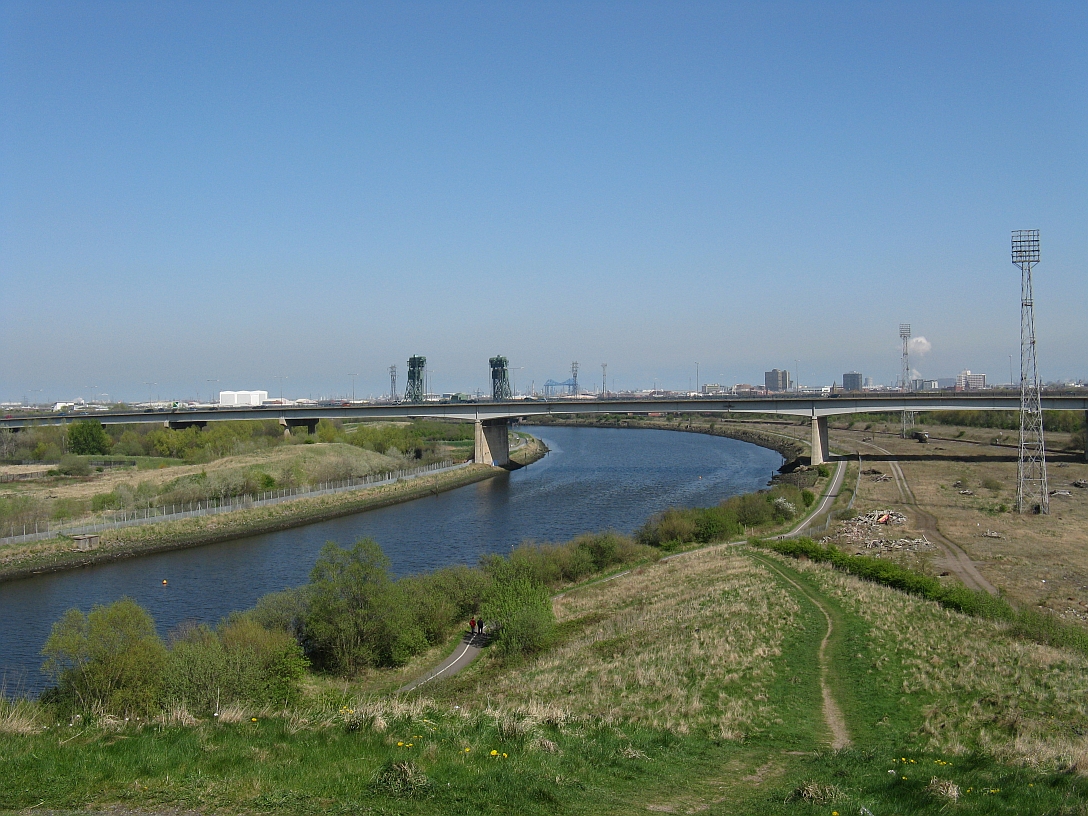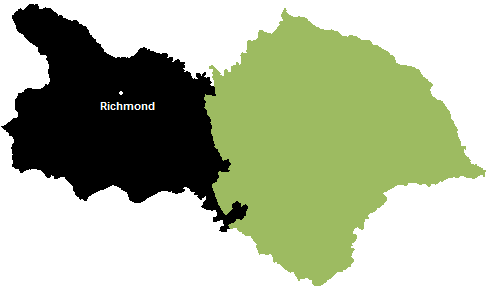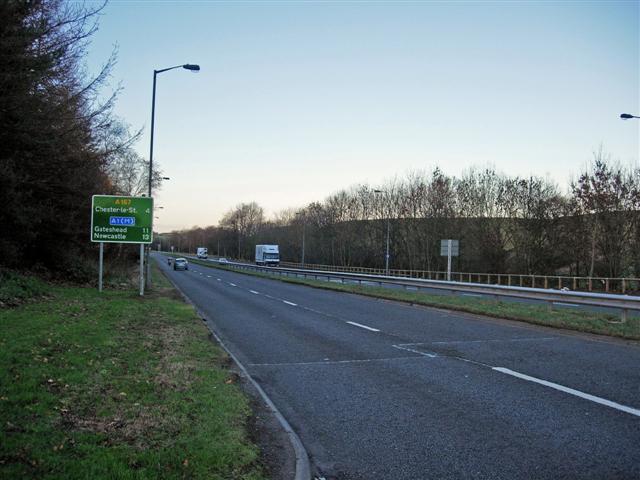|
Croft-on-Tees
Croft-on-Tees is a village and civil parish in the Richmondshire district of North Yorkshire, England. It has also been known as Croft Spa, and from which the former Croft Spa railway station took its name. It lies north-north west of the county town of Northallerton. History The village is mentioned in the ''Domesday Book'' as ''Crofst''. It makes no mention of any lord of the manor prior to the Norman conquest, but names ''Enisant Musard'' as lord after 1086, granted to him by Count Alan of Brittany. The lands were subject to many years of dispute until the 13th century. In 1205, King John settled the issue by granting the lands to Roald the Constable of Richmond. His heirs inherited the title until 1299 when they were succeeded by Henry le Scrope of Bolton. Thereafter the lands were held under the Scropes by the Clervaux family. They held the manor until 1590 when the direct male line ceased, but Clervuax inheritance continued via marriage to the Chaytor family into the 20 ... [...More Info...] [...Related Items...] OR: [Wikipedia] [Google] [Baidu] |
Croft Spa Railway Station
Croft Spa railway station was a railway station serving the settlements of Croft-on-Tees and Hurworth-on-Tees in County Durham, England. The station was located on the East Coast Main Line between Northallerton and Darlington. It was served by local trains on the East Coast Main Line, and also trains operating the Eryholme-Richmond branch line. History The first railway to Croft-on-Tees was built by the coal-carrying Stockton and Darlington Railway (S&DR) as one of its many short branches to serve collieries. The Croft branch left the main line to the South, near Darlington Bank Top station. A passenger station opened on 27 October 1829. The section of the Great North of England Railway (GNoER) between Darlington and York opened (for goods traffic only) on 4 January 1841; and passenger trains along the line were introduced on 30 March 1841, when a station at Croft was opened by the GNoER, which allowed the S&DR passenger station to be closed on the same day. The GNoER, ... [...More Info...] [...Related Items...] OR: [Wikipedia] [Google] [Baidu] |
Dalton-on-Tees
Dalton-on-Tees is a village and civil parish in the Richmondshire district of North Yorkshire, England, near the boundary with County Durham. According to the 2001 Census there were 318 people living in the parish (including Eryholme) in 120 houses. The population had decreased to 303 by the time of the 2011 Census. The village is bypassed by the A167 road between Darlington and Northallerton and is south of the village of Croft-on-Tees and north-east of the motor racing circuit Croft Circuit. There are signs at both the north and south entrances to the village indicating that the village is from Northallerton and from Darlington even though they are apart. To the east the village overlooks a meander of the River Tees, from which it derives its name: the town (tun) in the valley (or dæl ale. The village has a pub, the Chequers Inn, overlooking the village green, and a small village hall on the other side of the bypass just along West Lane. The village green is the ... [...More Info...] [...Related Items...] OR: [Wikipedia] [Google] [Baidu] |
River Tees
The River Tees (), in Northern England, rises on the eastern slope of Cross Fell in the North Pennines and flows eastwards for to reach the North Sea between Hartlepool and Redcar near Middlesbrough. The modern day history of the river has been tied with the industries on Teesside in its lower reaches, where it has provided the means of import and export of goods to and from the North East England. The need for water further downstream also meant that reservoirs were built in the extreme upper reaches, such as Cow Green. Etymology The name ''Tees'' is possibly of Brittonic origin. The element ''*tēs'', meaning "warmth" with connotations of "boiling, excitement" (Welsh ''tes''), may underlie the name. ''*Teihx-s'', a root possibly derived from Brittonic ''*ti'' (Welsh ''tail'', "dung, manure"), has also been used to explain the name ''Tees'' (compare River Tyne). Geography The river drains and has a number of tributaries including the River Greta, River Lune, River Balder, ... [...More Info...] [...Related Items...] OR: [Wikipedia] [Google] [Baidu] |
Richmondshire
{{Infobox settlement , name = Richmondshire District , type = District , image_skyline = , imagesize = , image_caption = , image_blank_emblem= Richmondshire arms.png , blank_emblem_type = Coat of arms , image_map = Richmondshire UK locator map.svg , map_caption = Shown within North Yorkshire , mapsize = frameless , subdivision_type = Sovereign state , subdivision_name = United Kingdom , subdivision_type1 = Constituent country , subdivision_name1 = England , subdivision_type2 = Region , subdivision_name2 = Yorkshire and the Humber , subdivision_type3 = Administrative county , subdivision_name3 = North Yorkshire , seat_type = Admin. HQ , seat = Richmond , government_type = Richmondshire District Council , leader_title = Leadership: , leader_name = Alternative – Sec.31 , leader_title1 = Executive: , leader_name1 = {{English district contr ... [...More Info...] [...Related Items...] OR: [Wikipedia] [Google] [Baidu] |
Robert Willan
__NOTOC__ Robert Willan (12 November 1757, near Sedbergh, Yorkshire – 7 April 1812, in Madeira) was an English physician and the founder of dermatology as a medical specialty. Life Willan was educated at Sedbergh School, and received his M.D. at Edinburgh in 1780 From 1781 he practised medicine in Darlington and then moved to London in 1783 as physician to the new Carey Street Public Dispensary, where he remained until 1803 teaching alongside Thomas Bateman. He was elected a Fellow of the Royal Society in 1809. Works Following the example of Carl Linnaeus, Willan attempted a taxonomic classification of skin diseases, describing impetigo, lupus, psoriasis, scleroderma, ichthyosis, sycosis, and pemphigus. Willan's portrait was reproduced on the cover of the British Journal of Dermatology for many years. Willan and Bateman working together provided the world's first attempt to classify skin diseases from an anatomical standpoint. In 1790, Willan received the Fothergill Go ... [...More Info...] [...Related Items...] OR: [Wikipedia] [Google] [Baidu] |
Croft On Tees, St Peter's Church - Geograph
Croft may refer to: Occupations * Croft (land), a small area of land, often with a crofter's dwelling * Crofting, small-scale food production * Bleachfield, an open space used for the bleaching of fabric, also called a croft Locations In the United Kingdom *Croft, Cheshire, in the Borough of Warrington *Croft, Leicestershire * Croft, Lincolnshire * Croft, Herefordshire ** Croft Castle, Herefordshire *Croft-on-Tees, North Yorkshire * Croft (Aberdeenshire castle), a former keep in Scotland * The Croft, a listed house in Totteridge, Barnet * Croft Circuit, a motor racing circuit in northeast England In the United States * Croft, California, in El Dorado County * Croft, Kansas People * Croft (surname) * Crofts (surname) See also * Crofts End, Bristol * Crofton, Cumbria *Crofton, British Columbia *Ashcroft (other) *Undercroft An undercroft is traditionally a cellar or storage room, often brick-lined and vaulted, and used for storage in buildings since medieval times ... [...More Info...] [...Related Items...] OR: [Wikipedia] [Google] [Baidu] |
Hurworth-on-Tees
Hurworth-on-Tees is a village in the borough of Darlington, within the ceremonial county of County Durham, England. It is situated in the civil parish of Hurworth. The village lies to the south of Darlington on the River Tees, close to its meeting point with the River Skerne, and immediately adjoins the village of Hurworth Place, which forms part of the same civil parish. Amenities The church of All Saints is situated in the middle of the village. There may have been a church on the site as early as the 12th century. The church was extensively rebuilt in the 1830s and again in 1871. There was a school at Hurworth before 1770, when it was refounded. Currently the village has two schools. Hurworth Primary School caters for around 250 children aged 4–11. The secondary school is called Hurworth School Maths & Computing College; it caters for around 650 students aged 11–16. There was also a small independent school, Hurworth House School, which closed in the summer of 201 ... [...More Info...] [...Related Items...] OR: [Wikipedia] [Google] [Baidu] |
Croft North Yorks A167 The Tees
Croft may refer to: Occupations * Croft (land), a small area of land, often with a crofter's dwelling * Crofting, small-scale food production * Bleachfield, an open space used for the bleaching of fabric, also called a croft Locations In the United Kingdom *Croft, Cheshire, in the Borough of Warrington *Croft, Leicestershire * Croft, Lincolnshire * Croft, Herefordshire ** Croft Castle, Herefordshire *Croft-on-Tees, North Yorkshire * Croft (Aberdeenshire castle), a former keep in Scotland * The Croft, a listed house in Totteridge, Barnet * Croft Circuit, a motor racing circuit in northeast England In the United States * Croft, California, in El Dorado County * Croft, Kansas People * Croft (surname) * Crofts (surname) See also * Crofts End, Bristol * Crofton, Cumbria *Crofton, British Columbia *Ashcroft (other) *Undercroft An undercroft is traditionally a cellar or storage room, often brick-lined and vaulted, and used for storage in buildings since medieval times ... [...More Info...] [...Related Items...] OR: [Wikipedia] [Google] [Baidu] |
Kettledrum (horse)
Kettledrum (1858–1885) was a British Thoroughbred racehorse and sire. In a career that lasted from August 1860 to September 1861 he ran eight times and won four races. As a three-year-old in 1861, he won The Derby and the Doncaster Cup and finished second in the 2000 Guineas and the St Leger. At the end of the season he was retired to stud where he had limited success, and was later exported to Austria-Hungary. Background Kettledrum was a big, powerful chestnut horse bred at Croft-on-Tees by James Cookson. As a yearling he was put up for sale at Doncaster and was bought for 400 guineas by the trainer George Oates on behalf of his patron, Charles Towneley of Towneley Hall in Burnley, Lancashire. Kettledrum’s sire, Rataplan, was a top-class racehorse who won forty-two races including the Doncaster Cup and the Cambridgeshire Handicap. He was a successful stallion but was even more successful as a sire of broodmares, being the damsire of the Derby winners Cremorne and ... [...More Info...] [...Related Items...] OR: [Wikipedia] [Google] [Baidu] |
Old English
Old English (, ), or Anglo-Saxon, is the earliest recorded form of the English language, spoken in England and southern and eastern Scotland in the early Middle Ages. It was brought to Great Britain by Anglo-Saxon settlement of Britain, Anglo-Saxon settlers in the mid-5th century, and the first Old English literature, Old English literary works date from the mid-7th century. After the Norman conquest of 1066, English was replaced, for a time, by Anglo-Norman language, Anglo-Norman (a langues d'oïl, relative of French) as the language of the upper classes. This is regarded as marking the end of the Old English era, since during this period the English language was heavily influenced by Anglo-Norman, developing into a phase known now as Middle English in England and Early Scots in Scotland. Old English developed from a set of Anglo-Frisian languages, Anglo-Frisian or Ingvaeonic dialects originally spoken by Germanic peoples, Germanic tribes traditionally known as the Angles, Sa ... [...More Info...] [...Related Items...] OR: [Wikipedia] [Google] [Baidu] |
A167 Road
The A167 and A167(M) is a road in North East England. It is partially a trunk road and partially a motorway, where it is commonly referred to as Newcastle Central Motorway. Most of the road’s route was formerly that of the A1, until it was re-routed with the opening of the A1(M) in the 1960s. Route The route starts from the A168 at Topcliffe, North Yorkshire and runs to Cowgate, Tyne and Wear where the route splits in two. The northern fork continues to Kenton Bar, where it meets the A1 and the A696, while the southern fork heads west, again terminating at the A1, this time at Westerhope. From the Topcliffe A168 Junction, the route runs north through Northallerton, and crosses the A66 road just east of the A66(M) section. It runs on through Darlington, across A1(M) junction 59, and on to Newton Aycliffe, Ferryhill, Durham and Chester-le-Street. The A167 bypass at Chilton near Ferryhill was completed and opened to traffic on 20 June 2005. Construction had started in ... [...More Info...] [...Related Items...] OR: [Wikipedia] [Google] [Baidu] |
Richmond School
Richmond School & Sixth Form College, often referred to simply as Richmond School, is a Mixed-sex education, coeducational secondary school located in North Yorkshire, England. It was created by the merger of three schools, the oldest of which, Richmond Grammar School, is of such antiquity that its exact founding date is unknown. The first mentions of it in writings, however, is estimated, to be between 1361 and 1474. It was officially ratified as an educational establishment in 1568 by Elizabeth I of England, Elizabeth I. The school is on the outskirts of Richmond, North Yorkshire, Richmond, near the Yorkshire Dales. It accepts both boys and girls and serves a wide catchment area across most of the north-west corner of North Yorkshire, including Swaledale. History Richmond Grammar School Richmond School was the first school in Richmondshire. It accepted only boys and its only entry requirements were that pupils could read and write. Its original founding date is not known, ho ... [...More Info...] [...Related Items...] OR: [Wikipedia] [Google] [Baidu] |






